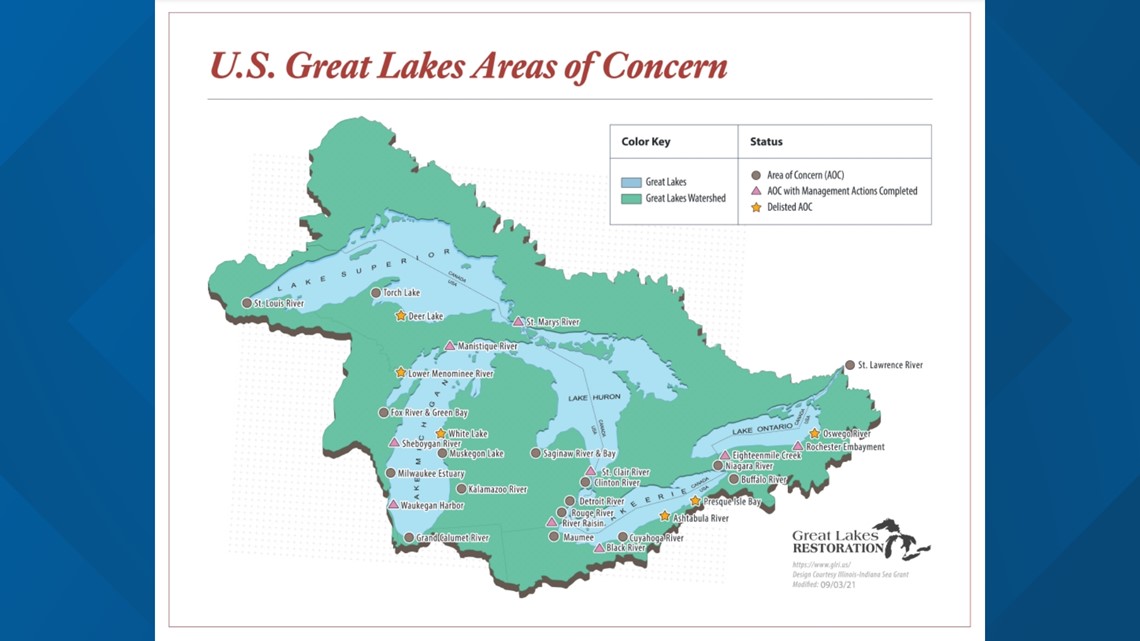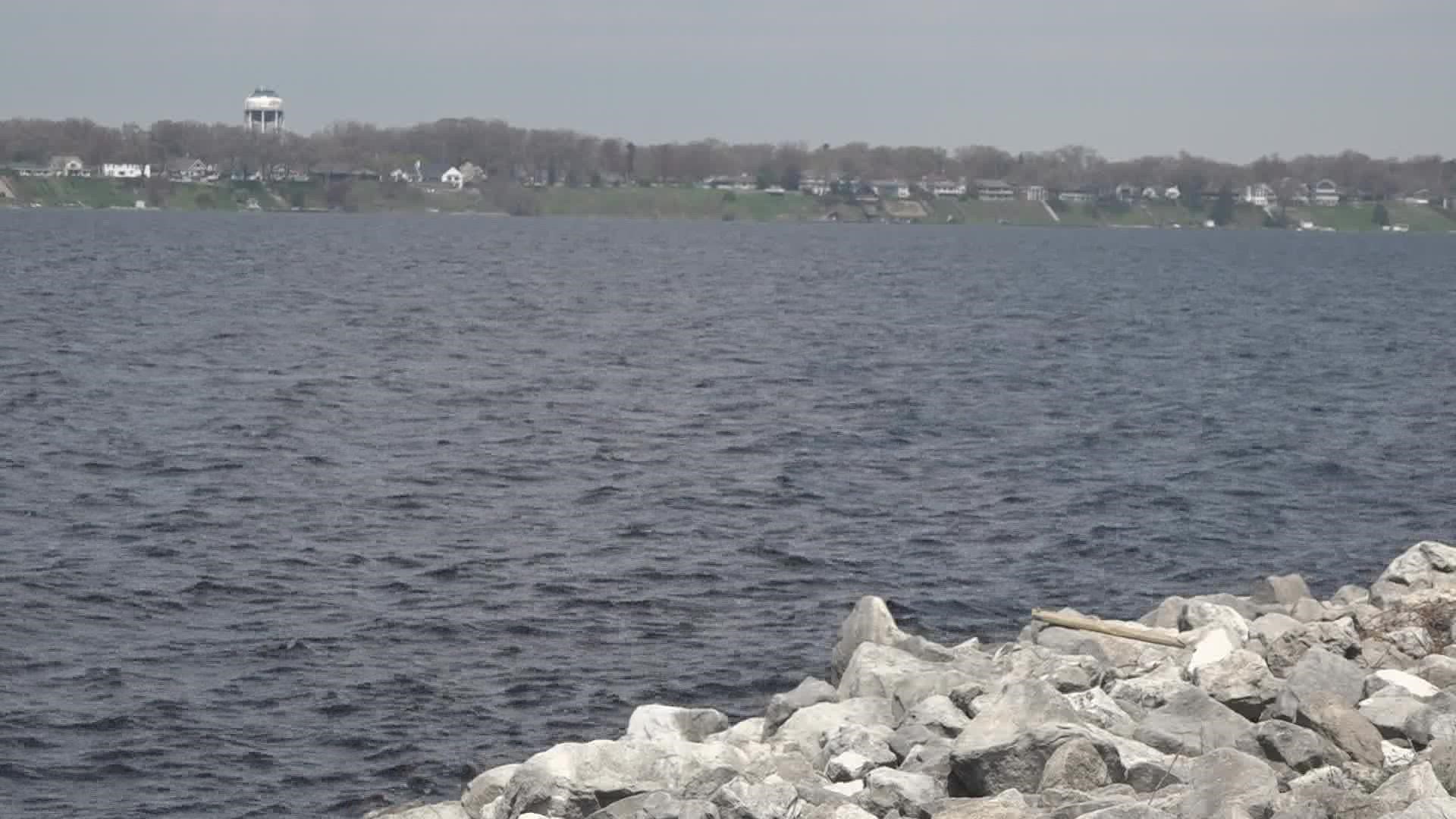MICHIGAN, USA — The Environmental Protection Agency (EPA) will make significant progress in the ongoing restoration and cleanup efforts of the Great Lakes with $1 billion in funding from the Bipartisan Infrastructure Law.
The majority of the funding will be used to clean up and restore severely degraded sites, known as “Areas of Concern” or AOCs. Muskegon Lake and the Kalamazoo River are among those sites.
There are currently 25 AOCs in the Great Lakes region that will be worked on over the next several years. The EPA projects that work will be completed at 22 of 25 remaining Great Lakes AOCs by 2030.
The Kalamazoo River is not one of the areas that will be completed by that deadline. EPA Deputy Administrator Janet McCabe says it's one of the more complex AOCs they're working on.
"That's one of the benefits of this significant, historic, investment of funds is that we can move those sites along and move them forward," McCabe said, noting that it will take nearly a decade to get the river where EPA leaders believe it should be.
Work at Muskegon Lake was completed last fall. However, McCabe says EPA workers will still monitor pollution levels there over the next few years. Muskegon Lake is set to be removed from the AOC list by 2026.
"These areas need a certain period of healing and recovery, before they can be determined to be fully recovered and then de-listed," McCabe said.
White Lake in Muskegon County used to be an AOC before being de-listed in 2014.
The efforts by the EPA to clean up the Great Lakes will secure clean water and a better environment for millions of Americans in the Great Lakes region while delivering significant environmental, economic, health and recreational benefits.
“The EPA’s announcement shows that the Bipartisan Infrastructure Law is already delivering for Michigan,” said Gov. Gretchen Whitmer. “Cleaning up our rivers and lakes will improve quality of life for Michiganders and accelerate economic opportunity for communities all across this state. Together, we will continue putting Michiganders first, fixing our infrastructure, and growing our economy.”
The investment from the Bipartisan Infrastructure Law is expected to grow the economy in the Great Lakes region through the cleanup and restoration efforts. According to an independent economic study from the Great Lakes Commission and the University of Michigan, every Great Lakes Restoration Initiative dollar spent produces an additional $3.35 of economic activity.
“The Great Lakes are a vital economic engine and an irreplaceable environmental wonder, supplying drinking water for more than 40 million people, supporting more than 1.3 million jobs, and sustaining life for thousands of species. Through the investments from President Biden’s Bipartisan Infrastructure Law, we will make unprecedented progress in our efforts to restore and protect the waters and the communities of the Great Lakes basin,” said EPA Administrator Michael S. Regan. “Building a better America means investing in our natural resources and the communities they support.”
The EPA will use the $1 billion in funding in combination with the annual Great Lakes Restoration Initiative appropriations and funding from other sources across eight states in the Great Lakes region.
The funding will be awarded by the EPA accordance with the Biden Administration’s Justice40 Initiative, which promises to deliver at least 40% of the overall benefits from key federal investments to underserved communities.
“With this investment, President Biden is delivering major environmental, public health, and economic wins for the Great Lakes region. Building a better America requires us to confront legacy pollution and clean up the environment – ensuring our kids drink clean water and creating good-paying jobs in the process," said White House Senior Advisor and Infrastructure Implementation Coordinator Mitch Landrieu.
"We know that cleaning up these waterways and improving the health of the Great Lakes will also create great economic opportunities for communities across the eight-state region and beyond.”
Other Great Lakes AOCs in Michigan where work is expected to be completed by 2030 include: Clinton River, Detroit River, Manistique River, River Raisin, Rouge River, St. Clair River, St. Mary's River and Torch Lake.


The EPA will also continue their work on other key issues like harmful algal blooms, nutrient reduction activities, protecting against invasive species and the overall monitoring of the health of the Great Lakes.
►Make it easy to keep up to date with more stories like this. Download the 13 ON YOUR SIDE app now.
Have a news tip? Email news@13onyourside.com, visit our Facebook page or Twitter. Subscribe to our YouTube channel.

